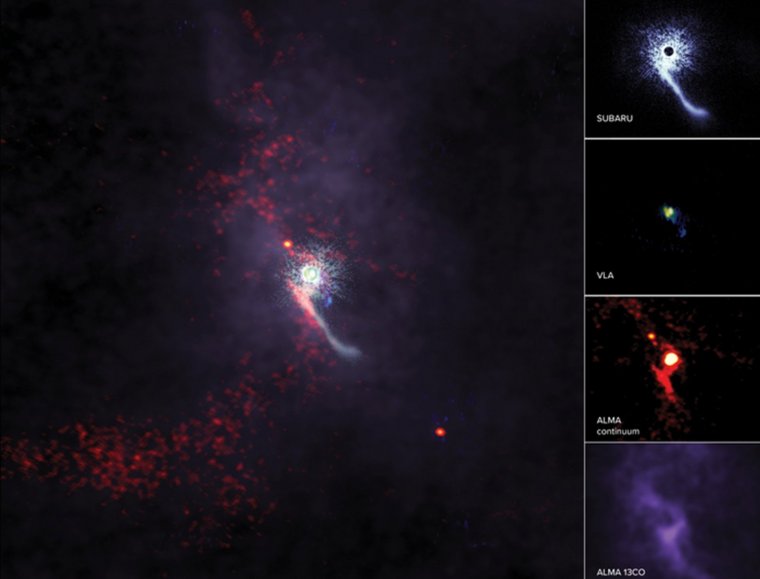| News / Space News |
Astronomers observe flyby of object in stellar nursery
An international team of astronomers has detected a rare stellar "flyby" near the protoplanetary disk around Z Canis Majoris, or Z CMa, a star in the Canis Major constellation. The foreign system pulled along streams of material in Z CMa's protoplanetary disk, a ring of dust and gas surrounding young stars.

Astronomers detect rare stellar flyby event in the Z Canis Majoris star system. Photo: ALMA (ESO/NAOJ/NRAO), S. Dagnello (NRAO/AUI/NSF), NAOJ
Such stellar interactions can create gaseous streams, alter the thermal state of the host star and impact the development of an entire star system.
The findings could transform our understanding of star system development, scientists say.
Studying the evolution and growth of young star systems throughout the galaxy helps scientists better understand the origin and development of star systems, including our own.
The study is the first to detail the rare occurrence of an observable star system intrusion, disturbance and aftermath. A star was observed coming close to and affecting the environment of an unrelated binary protostar.
The team documented streams of gas and dust produced by the encounter.
Stunning images were captured by the Atacama Large Millimeter/submillimeter Array, or ALMA, in Chile, and the Karl G. Jansky Very Large Array in New Mexico.
Perturbations, including long streams of gas, were observed in detail by the Subaru Telescope in Hawaii in the H-band, the Karl G. Jansky Very Large Array in the Ka-band, and using ALMA's Band 6 receiver. (National Science Foundation)
YOU MAY ALSO LIKE





